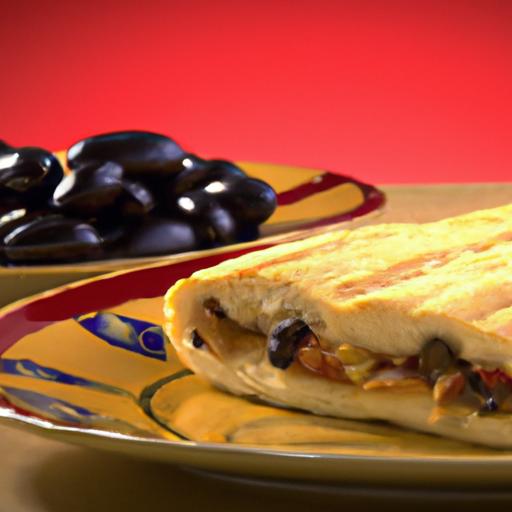There’s nothing quite as disappointing as sinking your teeth into a loaf of bread, only to be met with a dry, bland, almost cardboard-like flavor. You expect warm, comforting slices bursting with freshness and subtle sweetness, but instead, you encounter a crumb that’s dull and uninspiring. So why does this beloved staple sometimes taste more like a packing material than a delicious treat? In this article, we’ll unravel the mystery behind that cardboard-aftertaste, exploring the science, ingredients, and techniques that can turn your loaf from lifeless to luscious. Get ready to transform your bread-baking or buying habits and savor every bite again.
Understanding the Role of Ingredients in Bread Flavor
Why does my bread taste like cardboard? Uncovering the cause begins with a deep dive into the ingredients that shape bread’s signature flavor. Each component, from flour to yeast, plays a vital role, influencing taste, aroma, and texture in unique ways.
Flour, the backbone of bread, varies widely – bread flour is high in protein which makes chewy, well-structured loaves, while all-purpose flour leads to softer crumb but less depth. Whole grain or rye flours introduce earthy, nutty notes that enrich the flavor profile naturally.
Yeast is the alchemist, converting sugars into carbon dioxide and alcohol through fermentation – this creates the pockets, lightness, and that distinct tangy aroma. Using fresh yeast, or longer fermentation periods (like sourdough starters), can enormously elevate complexity. Instant or dry yeast, while convenient, sometimes results in blander outcomes if not treated carefully.
Salt doesn’t just season: it tightens gluten strands, sharpens flavor, and controls yeast activity. Too little salt leads to flat, insipid bread, a common cause of bland, cardboard-like tastes.
Additional ingredients-sugar, fats (butter, oil), dairy, and add-ins (seeds, nuts)-introduce layers of richness and mouthfeel, enhancing the sensory experience. Missing or substituting these out can dull bread’s character.
How Baking Techniques Influence the Taste and Texture
The transformation inside the oven is as critical as the ingredients. The temperature, baking time, and humidity determine the crust’s color, crunch, and crumb structure. A well-baked crust locks moisture in and develops caramelized Maillard reactions, resulting in complex, toasty notes. Overbaking or low temperatures can dry the loaf, causing cardboard-like dryness and bitterness.
Proofing time affects flavor profoundly. Underproofed dough lacks the gas bubbles and fermentation depth, while overproofed bread may collapse or become gum-like. Achieving balance ensures a light crumb with a tender crumb and enhanced flavor.
Techniques like scoring create controlled expansion and beautiful crust designs, and baking on stone or steel promotes even heat, improving texture.
Common Storage Mistakes That Lead to Cardboard-Like Bread
Storing bread improperly is a major culprit in flavor loss. Bread stored in the fridge accelerates starch retrogradation, drying out faster and creating that undesirable cardboard taste and crumbly texture.
Plastic bags trap moisture but can make crust soggy, while leaving bread exposed causes staling. The best approach is a paper bag or bread box that balances airflow, preserving crust crunch and internal softness.
Freezing fresh bread is excellent for prolonging life without sacrificing flavor-just thaw gently and refresh in the oven for a few minutes to regain freshness.
Expert Tips to Revive and Enhance Your Bread’s Flavor
If your bread tastes like cardboard, all hope isn’t lost. Simple revival techniques can rescue it:
- Lightly mist the crust with water, then wrap in foil and warm in a 350°F oven for 10-15 minutes. This steams the bread and rejuvenates the crumb.
- Toast slices to bring out toasted, caramelized aroma and heightened flavor contrasts; add butter or jams for richness.
- Use leftover stale bread in creative ways like making croutons, bread pudding, or French toast – culinary transformations that celebrate bread past its prime.
- Consider flavor boosts: a sprinkle of sea salt, a drizzle of high-quality olive oil, or fresh herbs enhance dull bread.
Proper baking and storage knowledge, paired with these simple hacks, turn ordinary bread into a delicious centerpiece every time.

Prep and Cook Time
- Preparation: 15 minutes
- Proofing: 1.5-2 hours
- Baking: 30-35 minutes
Yield
Produces 1 loaf (about 8-10 slices)
Difficulty Level
Medium – requires attention to detail and timing for ideal results
Ingredients
- 3 cups bread flour, sifted for lightness
- 1 ½ tsp salt
- 2 tsp instant yeast
- 1 1/4 cups warm water (110°F/43°C)
- 1 tbsp olive oil or melted butter
- 1 tsp sugar (optional, enhances yeast activity)
Instructions
- Mix dry ingredients: In a large bowl, combine bread flour, salt, sugar (if using), and yeast. Stir well to distribute evenly.
- Add liquids: Pour warm water and olive oil into the dry mix. Stir with a wooden spoon until a shaggy dough forms.
- Knead the dough: Transfer to a floured surface and knead for 10 minutes until smooth and elastic. Alternatively, use a stand mixer with a dough hook on medium for 7 minutes.
- First rise: Place dough in an oiled bowl, cover with a damp cloth, and let it proof in a warm place for 1-1.5 hours until doubled in size.
- Shape and second rise: Punch down the dough gently to remove excess gas and shape into a loaf. Place in a greased loaf pan or on a parchment-lined baking sheet. Cover and proof for an additional 30-45 minutes.
- Preheat oven to 400°F (200°C): Right before baking, slash the top of the dough with a sharp knife to control expansion.
- Bake: Place in the oven and bake for 30-35 minutes until the crust is golden brown and sounds hollow when tapped.
- Cool: Remove from oven and let cool completely on a wire rack to finish setting the crumb.
Tips for Success
- Use filtered water if your tap is heavily chlorinated as it can inhibit yeast growth.
- Adjust proofing times according to room temperature – cooler environments need longer rises.
- For richer flavor, try a slow refrigerator fermentation overnight instead of room temp proofing.
- To keep crust crisp, avoid storing bread in plastic bags at room temperature.
- When baking, place a small oven-safe dish with water on the lower rack to create steam and enhance crust development.
Serving Suggestions
Serve fresh slices warm with creamy butter, drizzled honey, or tangy cheeses like goat cheese or aged cheddar. Garnish with fresh rosemary or cracked black pepper for a sophisticated touch. Pair with hearty soups or a delicate salad for a satisfying meal.
| Nutrient | Per Slice (approx.) |
|---|---|
| Calories | 120 kcal |
| Protein | 4 g |
| Carbohydrates | 23 g |
| Fat | 1.5 g |
Explore in-depth techniques in our Sourdough Bread Techniques article and discover scientific insights into ingredient functions on King Arthur Flour’s guide for expert advice.
Q&A
Q: Why does my bread taste like cardboard?
A: That dry, bland flavor reminiscent of cardboard usually means something went wrong in the baking process. It could be poor-quality ingredients, lack of moisture, overbaking, or even stale flour-all of which rob bread of its delightful taste and texture.
Q: Can the type of flour affect the bread’s flavor?
A: Absolutely! Using low-quality or old flour can make your bread taste flat and lifeless. Fresh, well-sifted flour with the right protein content gives bread its characteristic flavor and crumb structure.
Q: Does overbaking contribute to that cardboard taste?
A: Yes, baking bread too long or at too high a temperature dries it out and intensifies the dull, papery flavor. Think of it like letting toast burn: once the moisture evaporates, all you’re left with is that tough, flavorless texture.
Q: How does moisture content influence bread taste?
A: Moisture is the heartbeat of fresh bread. If the dough doesn’t have enough water or the bread loses moisture during baking or storage, it can become dense and taste like cardboard. Hydration keeps bread soft and flavorful.
Q: Can additives or preservatives cause this off flavor?
A: Sometimes. Some commercial breads pack in preservatives or fillers that mute natural flavors, leaving behind a less-than-appetizing taste reminiscent of cardboard. Homemade or artisan breads usually avoid this pitfall.
Q: Does storage method impact bread flavor?
A: Definitely! Storing bread in a plastic bag without ventilation encourages sogginess or staleness, while leaving it exposed can dry it out. Both extremes can make your bread taste dull and cardboard-like after a while.
Q: Is the yeast responsible for the taste?
A: Indirectly, yes. Without proper yeast activity, the bread won’t rise well and can turn out dense and flavorless. Good fermentation develops complex flavors; neglecting this leaves a bland, cardboard-tasting loaf.
Q: How can I prevent my bread from tasting like cardboard?
A: Use fresh, quality ingredients; keep an eye on hydration; don’t overbake; store bread properly; and allow proper fermentation. Each step preserves the moisture, texture, and natural flavors that make bread truly delicious.
Q: Are there any simple tricks for reviving bread that tastes like cardboard?
A: You can try toasting it lightly and adding butter or jam to mask the dryness. Alternatively, repurpose the bread in recipes like French toast or bread pudding where moisture and flavorings come into play.
Q: Why is it important to understand the cause of cardboard-tasting bread?
A: Knowing the why helps you fix the issue-whether it’s technique or ingredients-so every bite is enjoyable, not an edible disappointment. Bread is an art and a science; mastering both brings that warm, comforting flavor to your table.
Closing Remarks
In the quest for the perfect slice, understanding why your bread tastes like cardboard can transform your baking from bland to brilliant. From ingredient pitfalls to storage slips, the causes are often simple but easily overlooked. By unraveling these common culprits, you’re not just fixing a flavor flaw-you’re reclaiming the joy of homemade bread. So next time your loaf leans toward lifelessness, remember: every crumb holds a clue, and with a little know-how, you can turn that cardboard crunch into a mouthwatering masterpiece. Happy baking!

